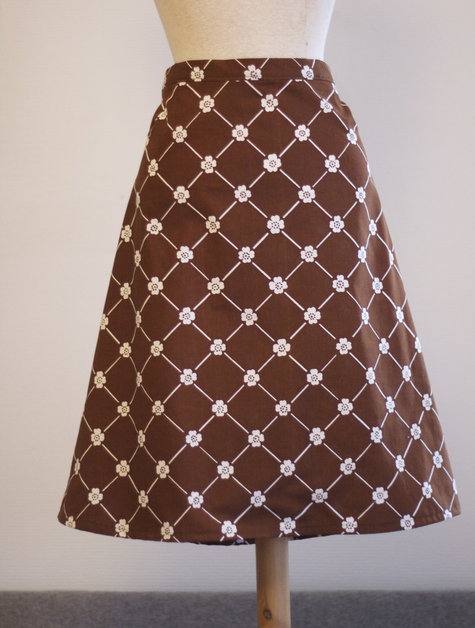Two of my old roommates have moved out of our house (since the lease is up) and into their own apartment. The place is super cute and they’ve been making it look really nice. They’ve got art and accent pieces all in blues in their living room and it looks like an adult apartment. They got a new couch and asked me if I could make pillow cases for the pillows they wanted to throw onto it. They were thinking of buying some cases but they are crazy expensive, it’s un-proportionally high for the amount of fabric you’re getting. When we were shopping together there was a small case, no pillow on sale for $40! It wasn’t even cute looking, I don’t understand these prices. So my roommates decided that buying the fabric and letting me make them cases would be better since they can pick a fabric they like and not be restricted by what is in the stores. The pillows I made were super fun to make and a great beginner project, the cases don’t come off the pillows so there is no need to worry about zippers.

Things you need:
-
A metre of fabric of your choice, this cotton fabric is from Fabricland
-
A pillow, for this project I’m using the 50cm x 50 cm (20” x 20”) pillows from Ikea
-
Newspaper for a template
-
Sewing machine
-
Needle and thread
-
Pins
Steps:
1)
Use the newspaper to make a template of the pillow, mine was just a square and probably could have gotten away with skipping this step but I wanted all of my sides to be straight and really ensure that each fabric piece would be the same size. I added a centimeter of seam allowance on to each side and cut the newspaper down to the size I needed.
2)
After washing and ironing your fabric, place it on a flat clean surface and fold in half, having the patterned sides of the fabric facing each other.
3)
Place you template on your fabric and pin into place, and cut. I am making two pillows with this piece and I ended up with 4 pieces of fabric.
4)
Place two pieces together, rights facing each other. If your fabric is patterned ensure the patterns are going to the same directions. Pin the pieces together and leave a space on one side that will be big enough to put your pillow into.
5)
Sew around making sure that you don’t sew the whole thing closed. With scrap fabric do some test stitches to make sure the stitches are tensioned properly for the fabric you’re using.
6)
After you’re done sewing, cut the extra fabric off the corners of the case, this will make for sharper corners to your work. Make sure you don’t cut the stitches themselves. Also if you had a really big seam allowance you can trim off any extra fabric.
7)
Put as much of your hand in the hole you created and pull the fabric through the hole. This will turn the pillow inside out. After that use a pencil to push the fabric in the corners more to really make them pointy.
The pillow after the corners are pushed out
8)
If you want to, you can iron the case.
9)
Put the pillow into the case. With the first pillow I took it out of the plastic and then spent an hour trying to stuff the pillow in to the case because I made the hole too small. With the second pillow I measured the circumference of the pillow in its packaging and made sure that the hole I left would be bigger. Then I cut the top of the pillow packaging and put the whole thing in the hole I made and held the pillow in place as I pulled the plastic off. The pillow then just unfolded itself into the case. This took less than 30 seconds.
The first pillow, mid stuffing
Second pillow, which was faster
10)
Make a blind stitch to close up the hole.
•
Take your needle and thread and double your thread and knot. Make sure your thread is long enough to close up your hole, but if it is too long there is more of a chance that the thread will knot as you’re working.
•
You should also pin your hole closed so that you do not get fabric moving around on you.
•
From the inside of the fold, poke your needle and poke it back through a few millimeters on the inside fold of your fabric and pull through.
•
You will be sewing the fabric on the inside of the fold of the hole to bring the two pieces of fabric together while trying to hide the thread.
You can't tell where the blind stitch is
11)
Fluff up the pillow, I was told that if you leave the pillows in the sun they will fluff up on their own. I left the pillows in a room with sunlight for a day and they did seem to have fluffed up a little bit, but I can’t tell if it was because of the sun or not.
When I was done I took the pillows to my friends house and was trying to take photos of the pillows, but my friend kept jumping into all of the photos I was trying to take. So I am including some of the photos I have of her and the pillows.
























































